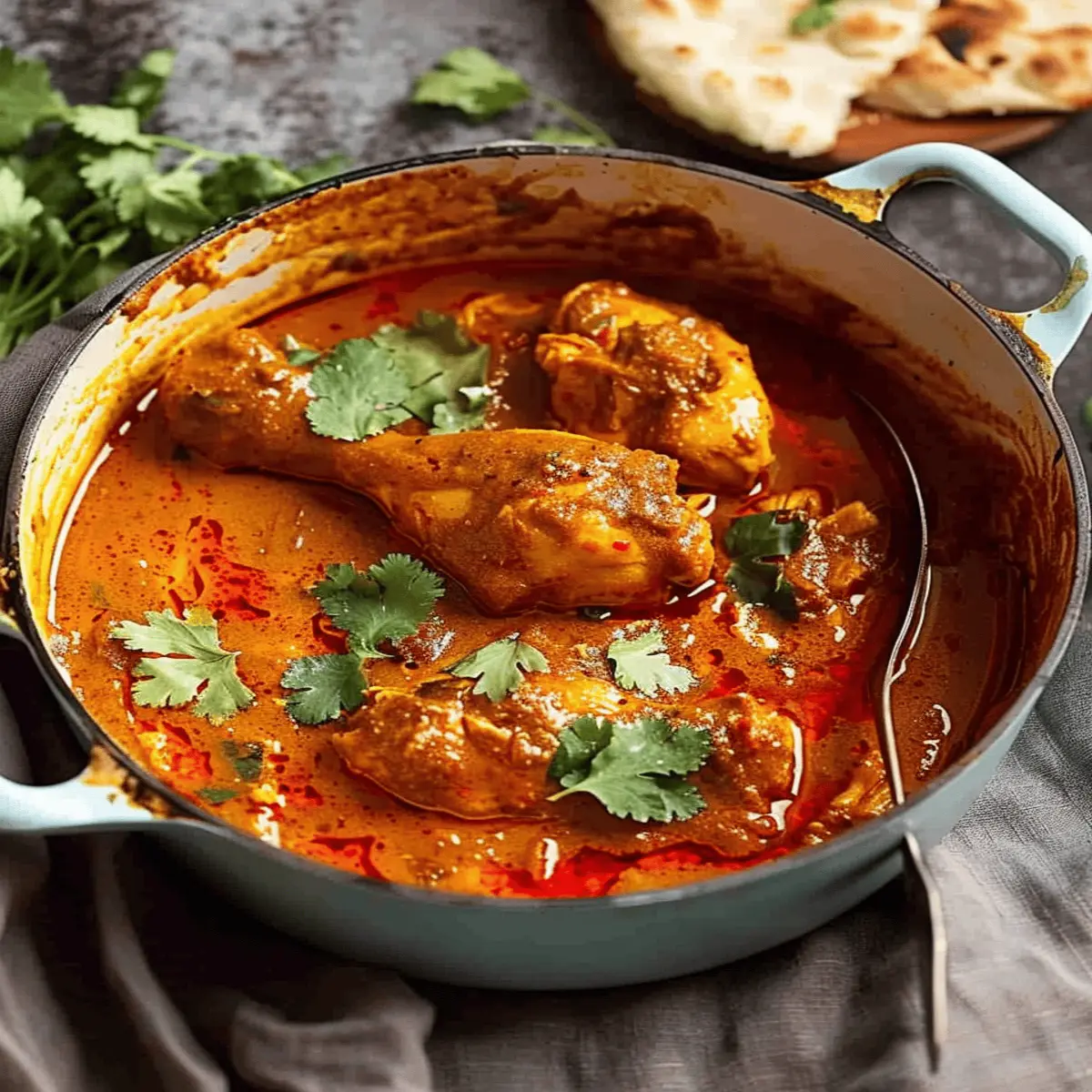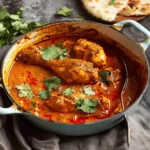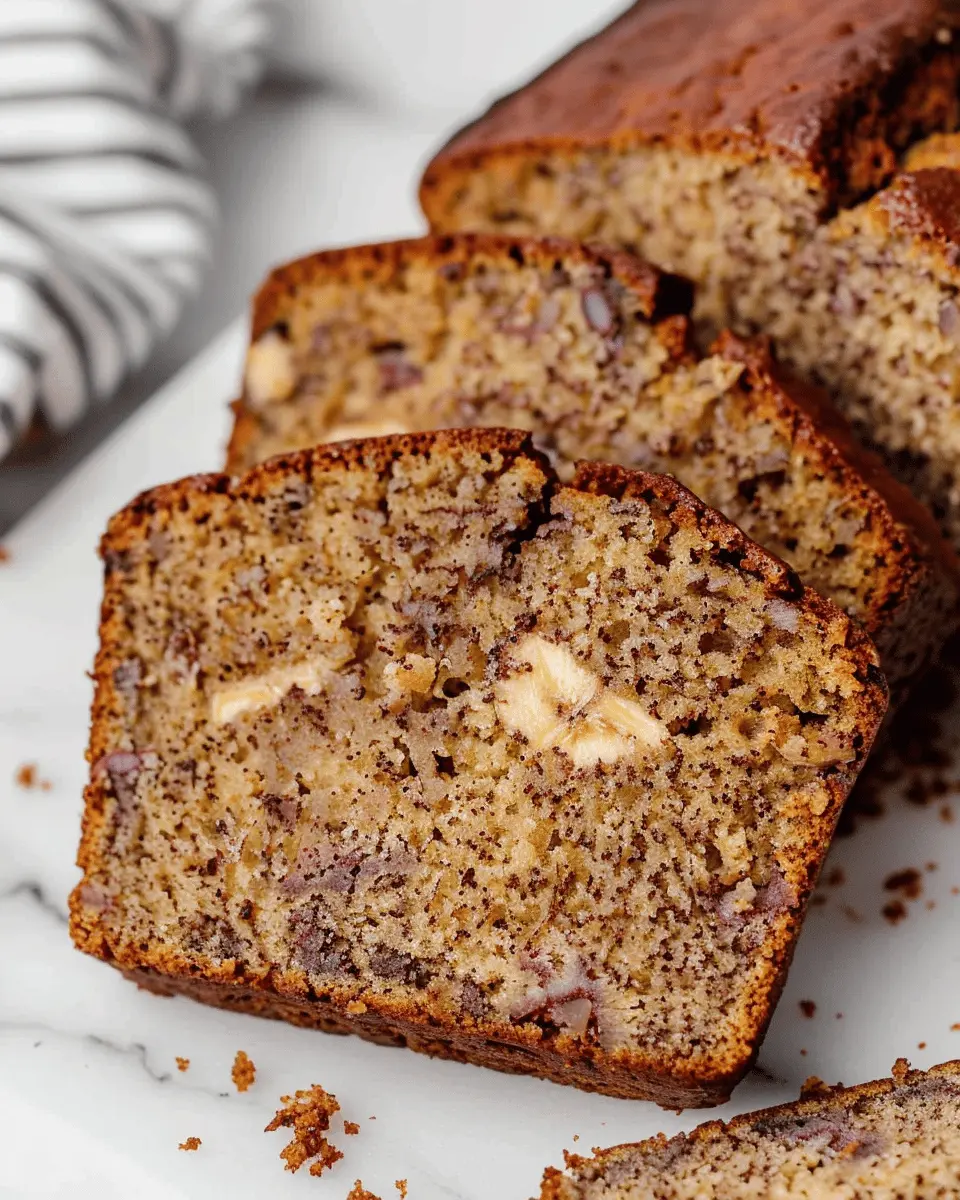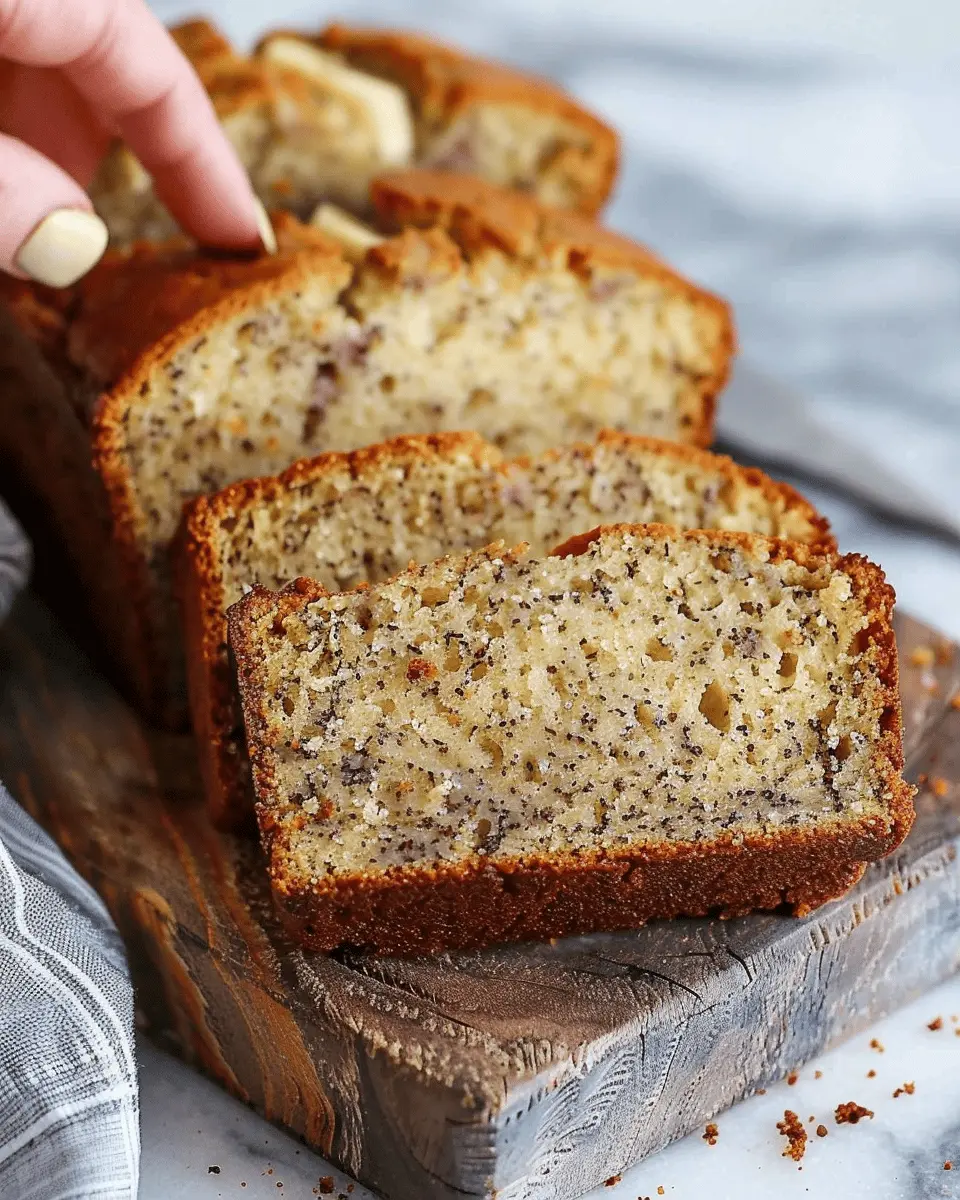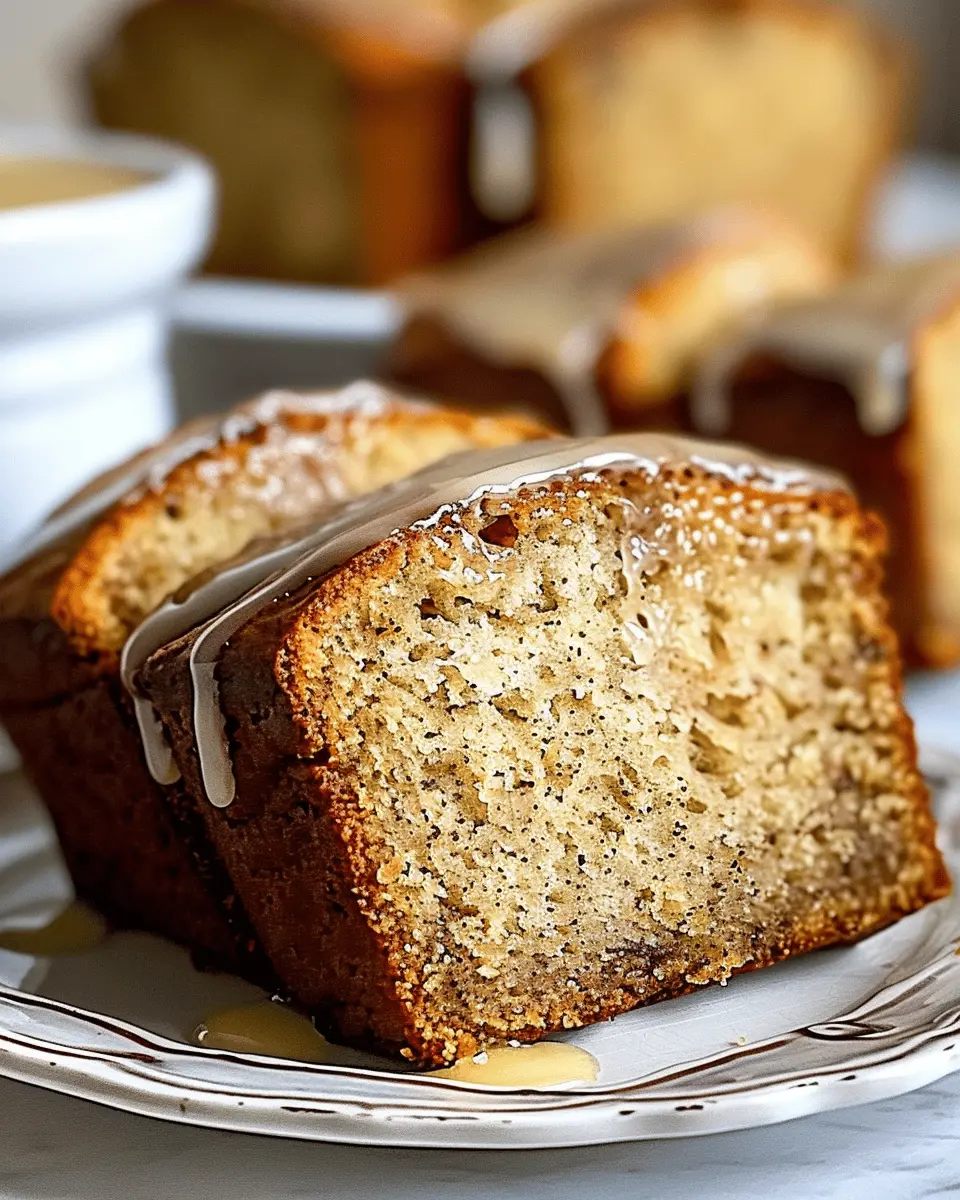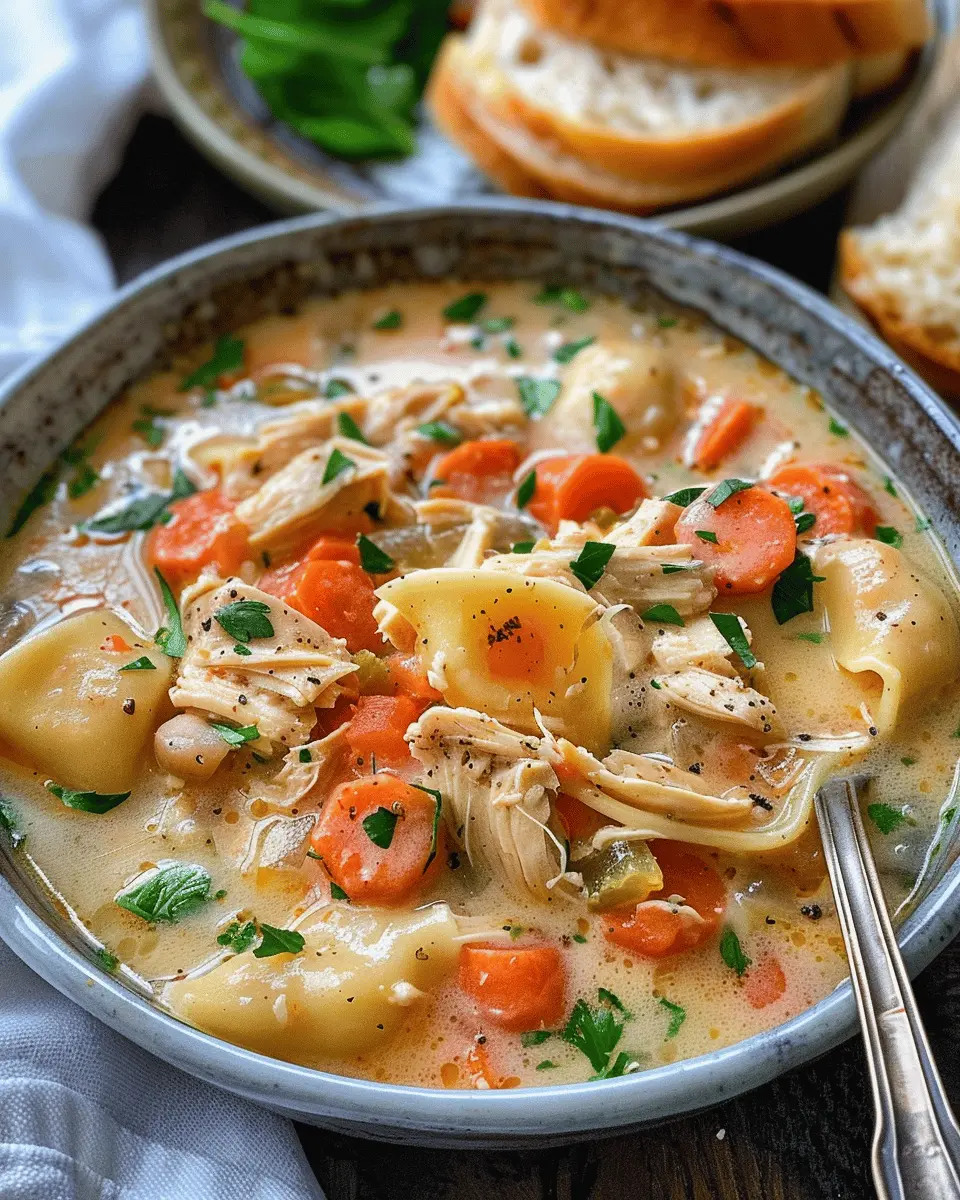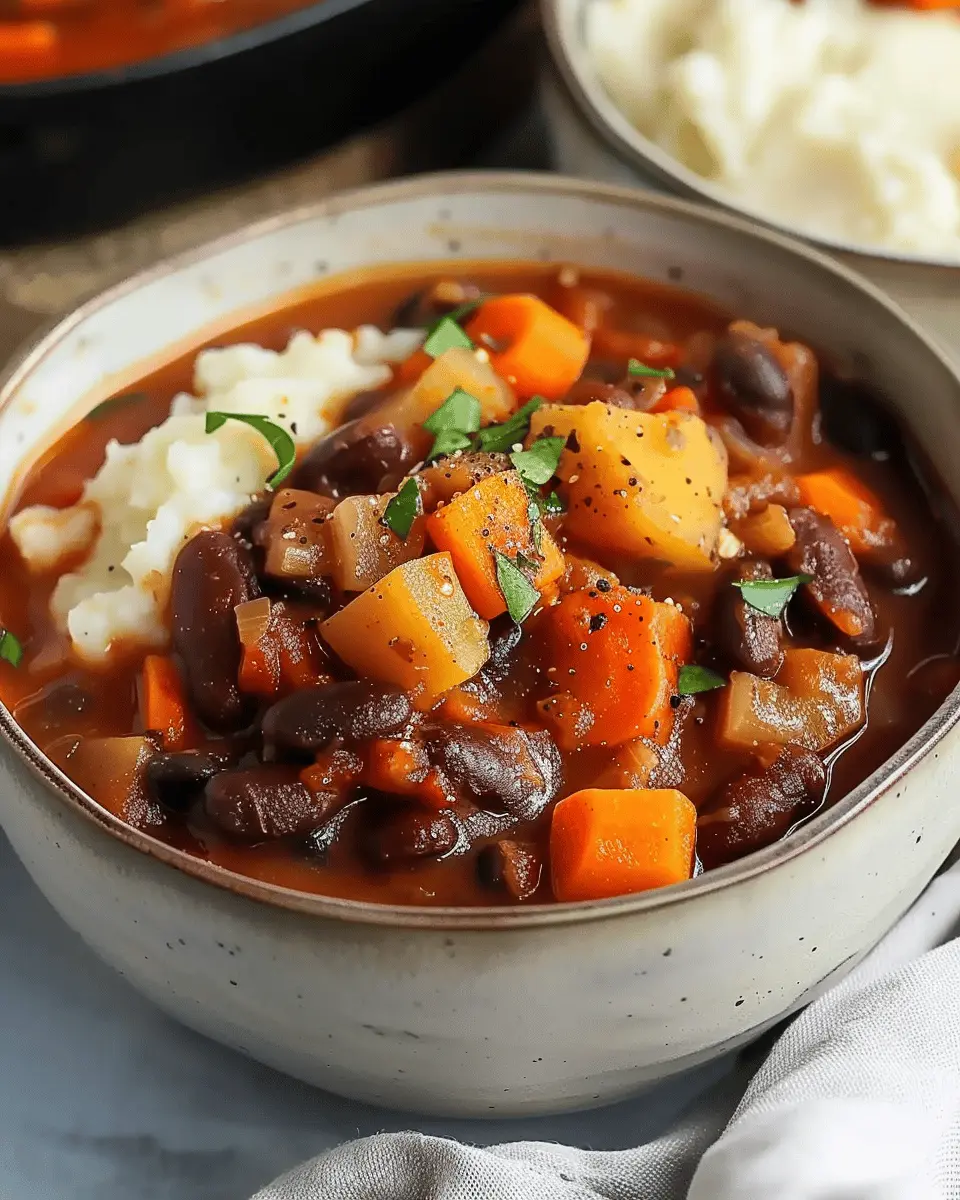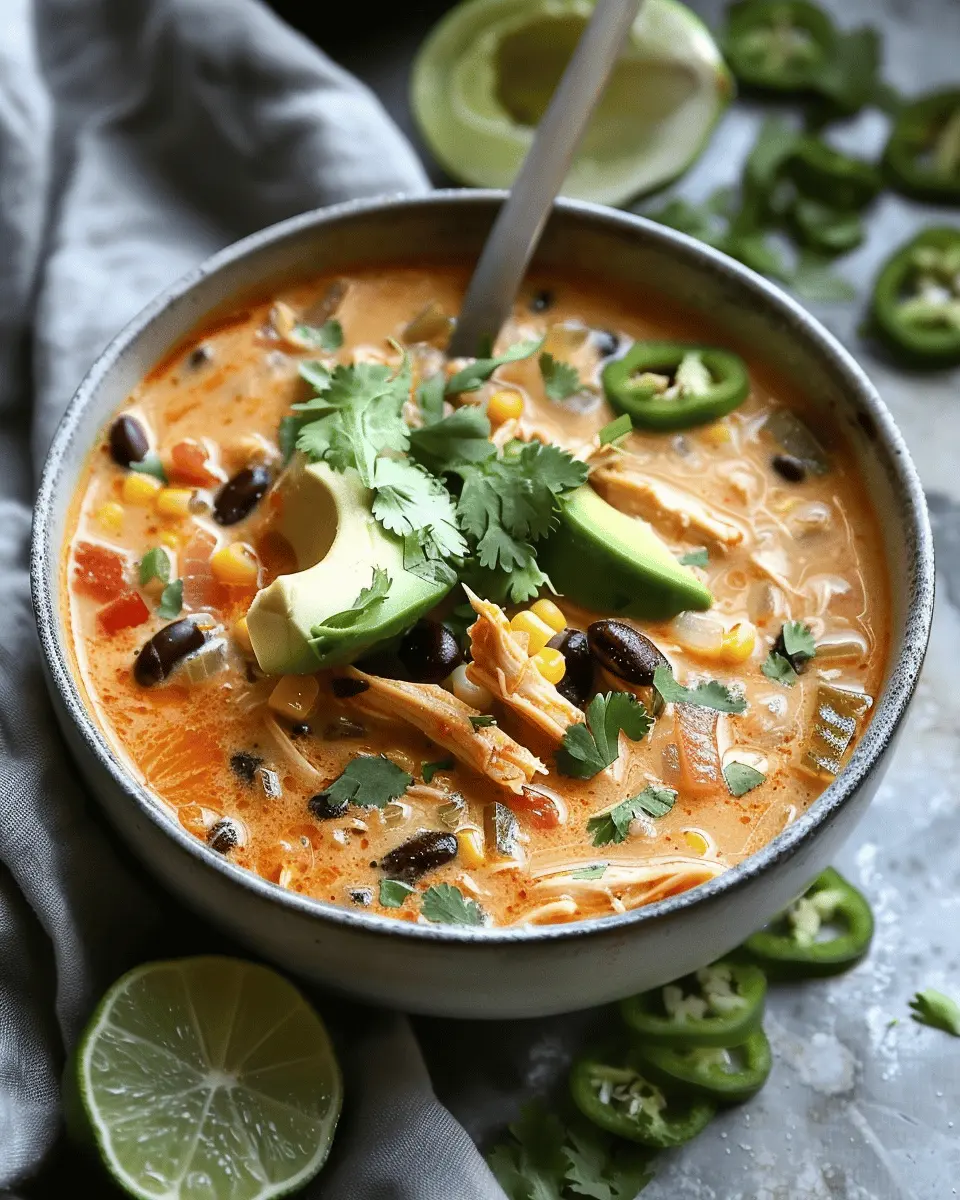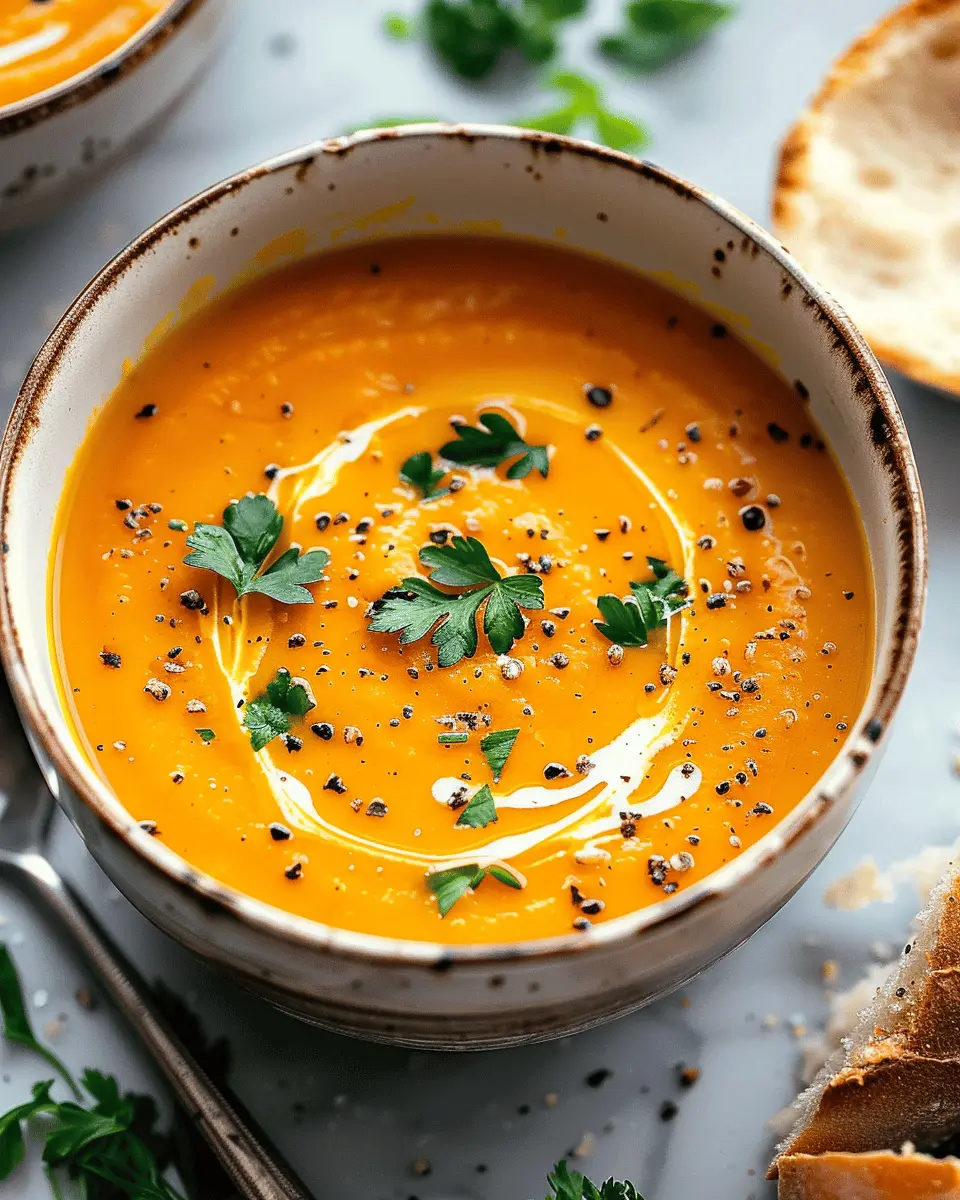Introduction to African Chicken Curry
If you’re on the quest for a new culinary adventure, look no further: African Chicken Curry, also known as Kuku Paka, is a dish that will take your taste buds on a delicious journey. Originating from East Africa, particularly Kenya and Tanzania, this vibrant curry combines succulent chicken with rich coconut milk and aromatic spices. But why exactly should this dish become a staple in your kitchen?
Why African Chicken Curry is a must-try dish
This dish is the epitome of flavor and comfort. What truly sets Kuku Paka apart is its unique blend of ingredients and cooking techniques. You start with tender pieces of chicken marinated in spices, then simmer them in a luscious coconut milk sauce, resulting in a meal that’s both creamy and satisfying.
-
Cultural richness: Each bite tells a story of tradition and heritage. The dish often hails from Swahili-speaking communities, and learning to make it can connect you to a vibrant culture. For more insight into Swahili cuisine, check out resources from The Smithsonian.
-
Health benefits: Chicken is a fantastic source of lean protein, and coconut milk brings healthy fats to the table. Incorporating spices like turmeric not only adds flavor but also provides anti-inflammatory properties. The unique blend of spices can be adjusted to suit your taste, making it as mild or spicy as you wish.
-
Versatility: This dish is extremely adaptable. You can easily customize it with your favorite vegetables, or even substitute chicken for tofu or chickpeas for a plant-based option.
Think about hosting a dinner party that introduces your friends to this dish. They’ll be blown away by the flavors, and you’ll impress them with your culinary skills. Plus, sharing food is one of the easiest ways to build connections with others. So gather your ingredients, roll up your sleeves, and let’s get started on this fantastic journey into the world of African Chicken Curry.
By embracing this dish, you’re not just cooking; you’re participating in a larger story of culture and community that transcends borders and traditions. Ready to dive into the recipe?
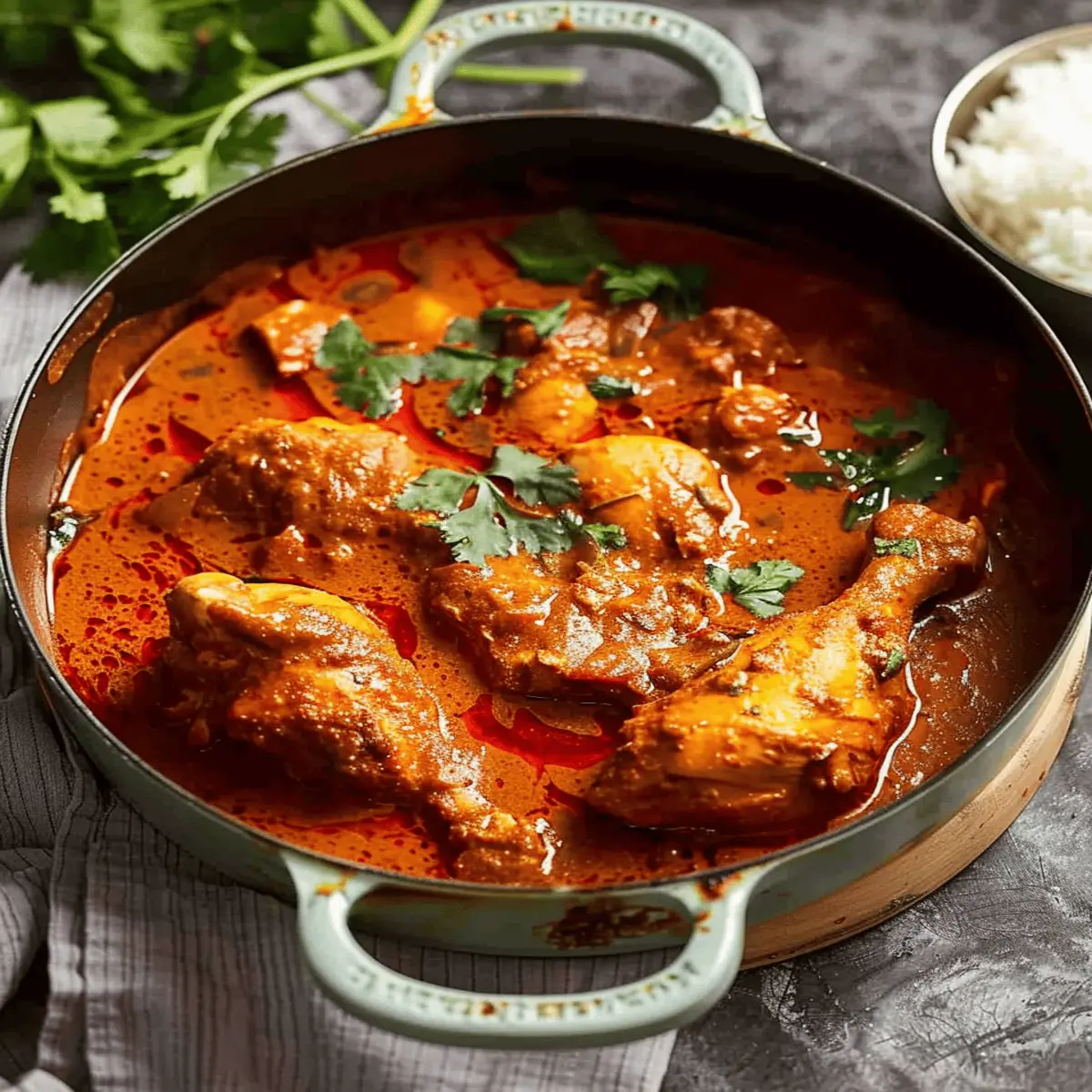
Ingredients for African Chicken Curry
When preparing a delicious African Chicken Curry, also known as Kuku Paka, gathering the right ingredients is essential for capturing its vibrant flavors. Let’s break down what you’ll need!
Essential spices and seasonings
The magic of this dish primarily lies in its spices, which create a warm and aromatic profile. Be sure to include these must-haves:
- Curry powder: A blend that often includes turmeric, cumin, and coriander.
- Garam masala: Adds depth and warmth.
- Coconut milk: Essential for that creamy texture and rich flavor.
- Garlic and ginger: Freshly minced for an aromatic kick.
These spices not only enhance flavor but also provide numerous health benefits, including anti-inflammatory properties from turmeric. WebMD has great insights on the health benefits of spices.
Key protein and vegetables
For the protein, you’ll want to use:
- Chicken thighs or breasts: Chicken thighs offer juiciness and flavor, but breasts are a leaner option.
Don’t forget your veggies:
- Onions: They form the flavor base and add sweetness.
- Tomatoes: Fresh or canned, they bring acidity and balance.
- Bell peppers: Add vibrant color and crunch.
These ingredients create a comforting and wholesome meal, perfect for sharing with friends or family. So, are you ready to embark on this culinary adventure? Let’s cook up some magic!
Preparing African Chicken Curry
When you’re craving something warm, vibrant, and utterly delectable, look no further than African Chicken Curry, also known as Kuku Paka. This dish, with its rich history and diverse flavors, promises a culinary journey that’s both satisfying and comforting. Ready to dive in? Let’s prepare this dish step by step!
Gather Your Ingredients
Before you get cooking, it’s essential to gather all your ingredients. Here’s what you’ll need:
- Chicken pieces (preferably thighs or drumsticks for moistness)
- Onions (2 medium, finely chopped)
- Garlic (4 cloves, minced)
- Ginger (1-inch piece, grated)
- Tomatoes (3 ripe, chopped, or a can of diced tomatoes)
- Coconut milk (1 can for creaminess)
- Spices:
- Curry powder (2 tablespoons)
- Ground cumin (1 teaspoon)
- Turmeric (1 teaspoon)
- Red chili powder (to taste)
- Vegetable oil
- Salt and pepper
- Fresh cilantro (for garnish)
- Optional vegetables: bell peppers, spinach, or carrots to add extra nutrition and flavor.
Once everything is ready, you can seamlessly transition into the next step!
Marinate the Chicken
Marinating your chicken is a crucial step that makes a world of difference in flavor. In a mixing bowl, combine the chicken with:
- A teaspoon of salt
- A tablespoon of curry powder
- Minced garlic
- Grated ginger
Let it sit for at least 30 minutes. If you have the time, a couple of hours in the fridge works wonders. It’s like marinating ensures your dish has a depth of flavor that you can’t achieve any other way. Looking for more tips on marinating? Check out this guide on marination.
Sauté the Aromatics
Now for the heart of any good African Chicken Curry: the aromatics! In a heavy-bottomed pot, heat a few tablespoons of vegetable oil over medium heat. Add the chopped onions and sauté until they turn golden brown, releasing a sweet aroma.
Stir in your minced garlic and grated ginger; let them cook for just a minute until fragrant. Your kitchen will thank you!
Build the Sauce
Once your aromatics are perfectly sautéed, it’s time to build that rich sauce. Add the chopped tomatoes, remaining curry powder, cumin, turmeric, and chili powder. Season with a pinch of salt. Cook everything on medium heat until the tomatoes break down and merge into a lovely sauce. This is where the magic starts; the flavors deepen, and your patience pays off!
Cook the Chicken to Perfection
Then, add your marinated chicken to the pot. Stir to coat each piece with the aromatic sauce. Pour in the coconut milk, mixing until everything is just combined. Bring the mixture to a gentle simmer. Cover your pot, letting the chicken cook for about 30 minutes or until it’s tender and cooked through. Cooking completely transforms the meat, making it succulent and packed with flavor.
Add the Vegetables
While the chicken is simmering, it’s the perfect time to chop up any optional vegetables you want to include. Toss them into the pot during the last 15 minutes of cooking. Spinach wilts beautifully, while bell peppers add a lovely crunch.
Simmer for Flavor Development
The final step in perfecting your African Chicken Curry is allowing it to simmer gently. Taste and adjust the seasonings as necessary—maybe a dash more salt or a sprinkle of pepper? Let it cook uncovered for an additional 5-10 minutes to thicken the sauce slightly. This is where you can experiment and truly make the dish your own.
And there you have it! A delightful bowl of African Chicken Curry that’s ready to be enjoyed. Serve it up with warm rice or fluffy naan and watch your friends and family savor every bite. Happy cooking!
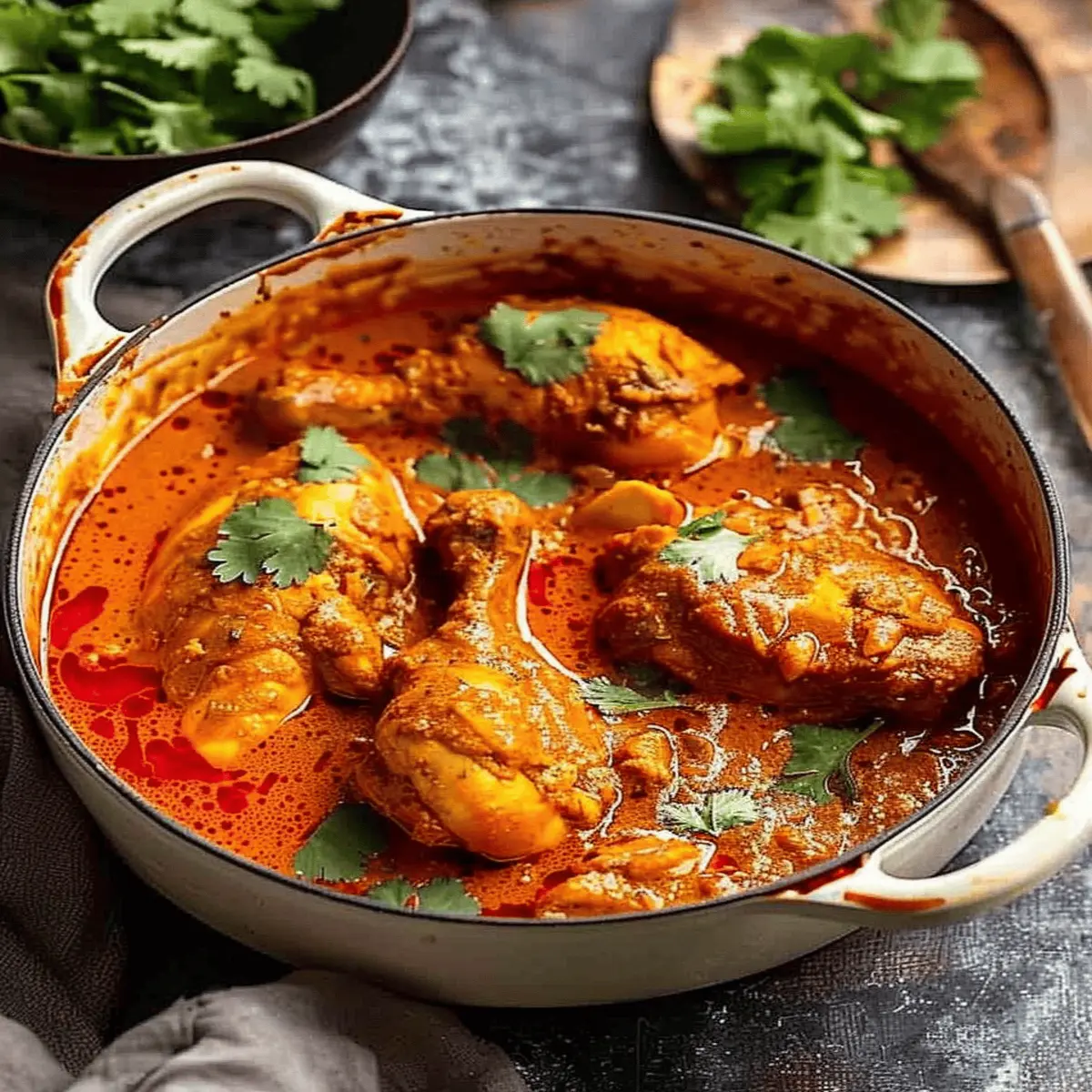
Variations on African Chicken Curry
Coconut Milk Twist
One of the most delightful changes you can make to traditional African Chicken Curry is incorporating coconut milk. This gives the dish a creamy, rich texture and a subtle sweetness that complements the spices beautifully. To achieve this, simply substitute half the chicken broth with coconut milk during the cooking process. Not only does this add depth, but it also makes the dish a favorite among friends who enjoy a richer flavor profile. If you’re curious about the versatility of coconut milk in cooking, check out more about it on Healthline.
Vegetarian Option with Chickpeas
Want to enjoy the essence of African Chicken Curry but prefer to skip the meat? No worries! You can easily transform this dish into a vegetarian delight using chickpeas. Simply replace the chicken with one can of drained and rinsed chickpeas. This not only maintains the hearty nature of the dish but also allows you to experience the flavors of the spices while providing a good dose of plant-based protein. Experimenting with chickpeas in your cooking can open up a world of possibilities, as highlighted by BBC Good Food.
Heat Levels: Spicy vs. Mild
When it comes to spice, the beauty of African Chicken Curry is its versatility. You can cater the heat level to your preference by adjusting the amount of chili or hot pepper used. For a spicy kick, consider using scotch bonnet peppers, a staple in many African cuisines. If you’re aiming for a milder version, simply reduce the quantity or opt for sweeter peppers like bell peppers. Remember, the best dishes are those that fit your palate, so feel free to customize!
No matter how you choose to adapt your African Chicken Curry, experimenting with these variations can bring even more joy to your culinary journey. Happy cooking!
Cooking Tips and Notes for African Chicken Curry
Mastering the spice balance
Creating the ultimate African Chicken Curry relies on finding that perfect harmony of spices. Don’t hesitate to adjust your spices to suit your palate! If you’re uncertain where to start, consider these tips:
- Taste as you go: Check the flavor multiple times throughout cooking. This way, you can tweak the heat or sweetness to your liking.
- Fresh spices matter: Use high-quality, fresh spices for the best flavor. Check out resources like The Spice House for valuable insights on spice freshness.
- Experiment with aromatics: Adding ingredients like garlic or ginger can enhance your dish’s depth. They add a wonderful punch!
Meal prep insights
Planning ahead is key to a hassle-free cooking experience. Here are a few meal prep insights to keep in mind:
- Marinate the chicken: For maximum flavor, marinate your chicken overnight with the spices and coconut milk. It’s a game-changer!
- Vegetable prep: Chop your vegetables ahead of time and store them in airtight containers. This step can save you precious minutes during the week.
- Batch cooking: Consider making a double batch of your African Chicken Curry and freezing half. You’ll have a delicious meal ready in no time for those busy days!
By incorporating these tips into your cooking routine, you’ll enjoy a delightful and flavorful African Chicken Curry that impresses every time!
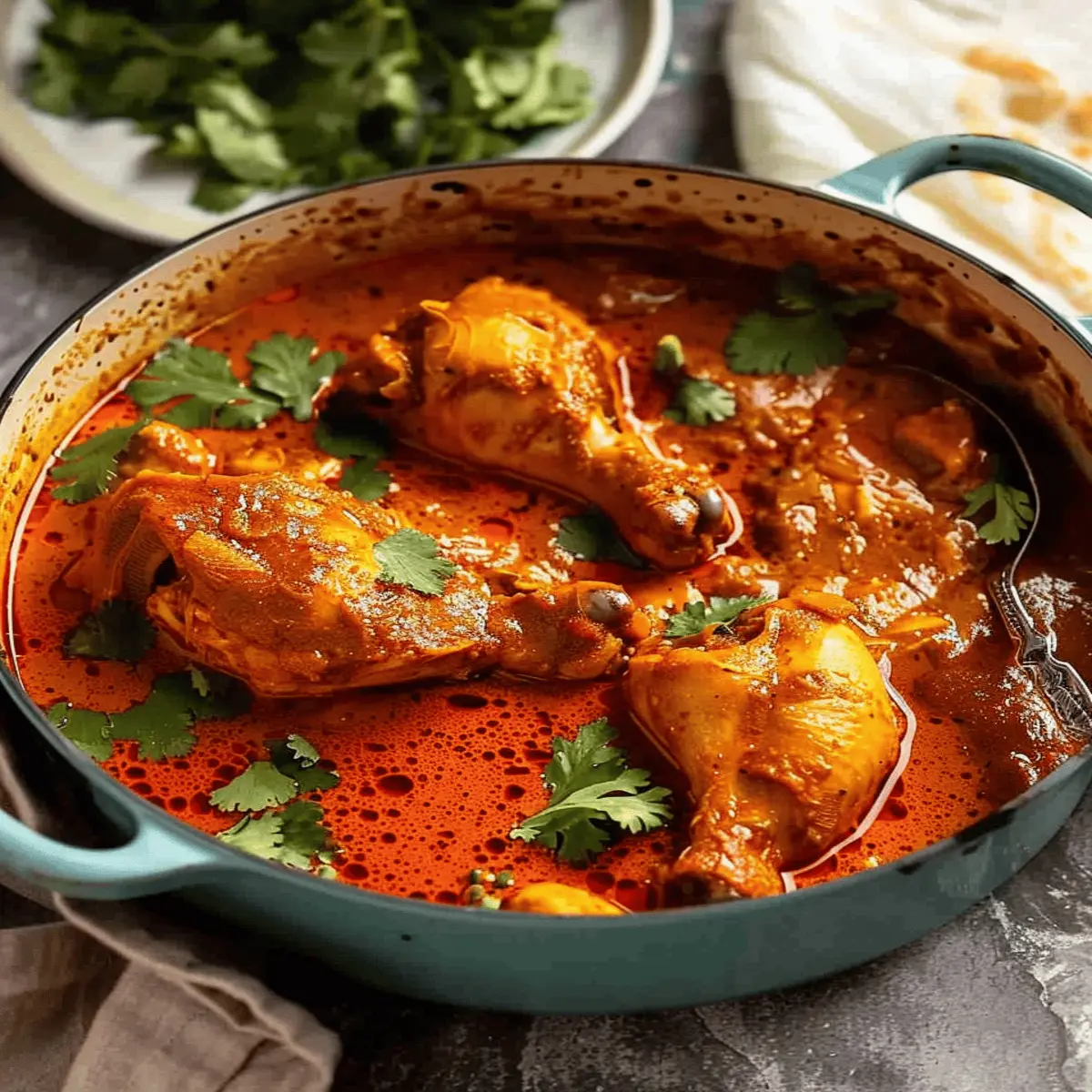
Serving suggestions for African Chicken Curry
When it comes to enjoying African Chicken Curry, also known as Kuku Paka, the way you serve it can elevate the experience. Here are some friendly suggestions to get you started!
Ideal sides: Rice, bread, or salad?
Choosing the right side can enhance the bold flavors of your curry. Here are a few options to consider:
-
Rice: Fluffy basmati or jasmine rice is the classic go-to. The mild taste complements the spices beautifully, soaking up the delicious sauce.
-
Flatbreads: Try serving your curry with warm naan or chapati. Not only are they perfect for scooping up the curry, but they also add a nice texture.
-
Salads: For a refreshing contrast, a simple cucumber and tomato salad works wonders. It adds freshness and crunch, balancing the richness of the dish.
If you want to dive deeper into perfect pairings, check out the Flavorful Sides for more inspiration.
Presentation tips for your dish
To wow your guests, consider these simple yet effective presentation tips:
-
Use Colorful Bowls: Serving your African Chicken Curry in vibrant bowls will not only make it visually appealing but also bring out the rich colors of the spices.
-
Garnish Creatively: A sprinkle of fresh cilantro or a wedge of lime can add a fresh touch.
-
Serve Individually: For a personal touch, dish out individual servings with all the sides arranged artfully.
With these suggestions, your Kuku Paka will not only taste amazing but also look inviting on the table! Enjoy the exploration of flavors and please your palate.
Time breakdown for African Chicken Curry
Getting your timing right is crucial when crafting the delicious African Chicken Curry. Here’s a straightforward breakdown to help you plan your meal prep efficiently.
Preparation time
Setting aside about 15-20 minutes for preparation ensures you have everything chopped and ready to go. It’s the perfect time to gather those aromatic spices and fresh ingredients that will elevate your dish.
Cooking time
Once you’re in the kitchen, the actual cooking will take around 40-50 minutes. This includes simmering the chicken to allow those lovely flavors to meld beautifully.
Total time
From start to finish, you’re looking at approximately 1 hour. This makes it a wonderful dish for both weeknights and when entertaining guests!
By partitioning your time effectively, you’ll not only enjoy the cooking process but also the delightful meal that awaits. If you want to explore more about the spices used in this dish, check out The Spice House for some great options!
Nutritional Facts for African Chicken Curry
Suggested Serving Size
When you’re preparing a comforting dish like African Chicken Curry (Kuku Paka), it’s easy to lose track of portions. A typical serving size is about one cup. This generous amount allows you to savor the flavors without overindulging, making it perfect for a balanced meal.
Calories and Macronutrient Breakdown
Now, let’s dive into the delicious details. One serving of African Chicken Curry typically contains around 350-450 calories, depending on the specific ingredients you choose. Here’s a quick breakdown to guide you:
- Protein: 25-30 grams
- Carbohydrates: 30-40 grams
- Fat: 15-20 grams
This wholesome dish provides a good balance of nutrients, making it a nourishing choice. For more detailed information on dietary needs, you might consider checking out the USDA’s FoodData Central for insights about various ingredients you plan to use.
Eating a dish packed with flavor and nutrients not only satisfies your taste buds but also helps fuel your busy lifestyle. So, why not enjoy this delicious meal guilt-free?
FAQs about African Chicken Curry
Can I make African Chicken Curry ahead of time?
Absolutely! African Chicken Curry, or Kuku Paka, is a great meal prep option. In fact, letting the flavors meld overnight can enhance the dish even further. Simply follow the recipe, then refrigerate it for up to 3 days. When you’re ready to enjoy, just reheat gently on the stovetop or in the microwave. For longer storage, consider freezing it in portioned containers, which can last up to 3 months.
What type of chicken works best?
For this flavorful curry, using bone-in, skin-on chicken pieces adds richness and depth. The bones contribute to a more robust broth, which is what makes the curry truly special. However, if you prefer a leaner option, boneless chicken thighs or breasts can work as well. The key is to ensure the chicken is well-marinated and allows the spices and coconut milk to infuse through the meat.
How can I adjust the spice levels?
Adjusting the spice levels in your African Chicken Curry is easy, and it’s all about personal preference! To tone it down, remove some of the chili peppers or choose milder varieties like poblano peppers. Alternatively, if you’re craving extra heat, you can add more chili flakes or a dash of hot sauce during cooking. Also, don’t hesitate to mix in a dollop of yogurt or coconut cream when serving—these cooling agents can balance out spiciness beautifully.
Whether you’re a culinary novice or an experienced chef, Kuku Paka offers a delicious journey into African flavors. Explore more about the origins and varying recipes of this dish to make it your own here.
Conclusion on African Chicken Curry
Embracing Homemade Flavors and Memories
When you gather around a warm bowl of African Chicken Curry, you’re not just enjoying a meal; you’re creating lasting memories. This rich and aromatic dish invites friends and family to share laughter and stories. Each bite immerses you in a world of flavors—coconut milk, spices, and tender chicken dancing harmoniously together.
Making this curry at home allows you to experiment with ingredients, tailored to your palate. Plus, cooking unfolds a wonderful opportunity to connect with different cultures and traditions, enhancing your culinary adventures. So, why not embrace the essence of Kuku Paka and let it spark joy in your kitchen? For further inspiration, check out this guide on spices that can elevate your dish!
PrintAfrican Chicken Curry: Irresistibly Spicy Kuku Paka Delight
A flavorful and spicy chicken dish originating from Africa, specifically Kenya, known for its coconut milk base and aromatic spices.
- Prep Time: 15 minutes
- Cook Time: 30 minutes
- Total Time: 45 minutes
- Yield: 4 servings 1x
- Category: Main Course
- Method: Stovetop
- Cuisine: African
- Diet: Gluten-Free
Ingredients
- 1 kg chicken, cut into pieces
- 2 tablespoons vegetable oil
- 1 onion, chopped
- 3 garlic cloves, minced
- 1 tablespoon ginger, grated
- 2 teaspoons curry powder
- 1 teaspoon turmeric
- 1 teaspoon cumin
- 1 can (400ml) coconut milk
- 1 tomato, diced
- 1 bell pepper, sliced
- 1 tablespoon lemon juice
- Salt to taste
- Fresh cilantro for garnish
Instructions
- Heat oil in a large pot over medium heat. Add onions and sauté until translucent.
- Add garlic and ginger, stir for 1 minute.
- Mix in curry powder, turmeric, and cumin. Cook for another minute.
- Add chicken pieces, browning on all sides.
- Stir in coconut milk, diced tomato, and bell pepper. Bring to a simmer.
- Cover and cook for about 30 minutes, or until chicken is cooked through.
- Finish with lemon juice and adjust salt to taste.
- Garnish with fresh cilantro before serving.
Notes
- This dish is great served over rice or with flatbread.
- Adjust spices according to your spice tolerance.
Nutrition
- Serving Size: 1 bowl
- Calories: 380
- Sugar: 3g
- Sodium: 760mg
- Fat: 28g
- Saturated Fat: 15g
- Unsaturated Fat: 10g
- Trans Fat: 0g
- Carbohydrates: 12g
- Fiber: 2g
- Protein: 25g
- Cholesterol: 140mg
Keywords: African Chicken Curry, Kuku Paka, spicy chicken curry, Kenyan recipe
